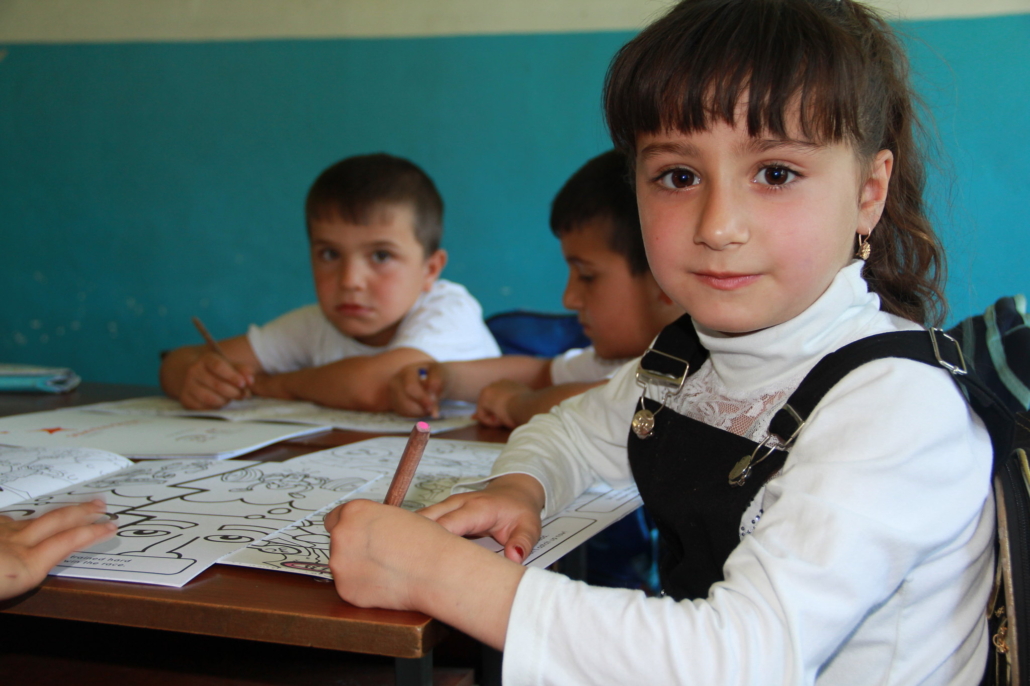Why Child Poverty In Azerbaijan Is Still An Issue

In the last two decades, child poverty in Azerbaijan has shown improvement amid economic expansion. However, this economic growth has also led to increased inequality. The benefits of this growth are primarily in urban areas, while rural regions face diminishing opportunities, resulting in a notable rise in child poverty among affected communities.
The Causes
Despite its increasing wealth and growing influence in wider regions, poverty and corruption still overshadow much of the development occurring in Azerbaijan.
More than 90% of Azerbaijan’s exports come from the concentrated area of Greater Baku, located near the offshore oil and gas reserves of the Caspian Sea. This means that the money earned from exports often only reaches a relatively small area. According to the 2021 World Bank report, Azerbaijan exhibits more than two times the inequality of any other country in Europe and Asia. While More than 40% of the population works in agriculture, it only accounts for 5.7% of exports. More than 60% of Azerbaijan’s poor live in rural areas that depend on agriculture as their primary source of income, highlighting the large divide between the different regions of the country.
The Effects
There are currently around 20,000 children without parental care in Azerbaijan. Though many of their parents are still alive, extenuating circumstances like poor treatment and abuse can lead to children in poverty becoming ‘social orphans.’ Faced with unbearable living conditions out on the streets or in underfunded orphanages, these children often find themselves victimized emotionally and physically with little to no avenues out of this situation many children find themselves victimized emotionally and physically. These unaccompanied minors also have limited access to education, making the poverty trap even harder to escape.
Around 11% of girls marry before the age of 18. Different factors such as religion, education or social status can exacerbate child marriage, but often poverty is the driving force behind it. Child marriage rates are highest in the more rural areas of Azerbaijan, where many families marry off their daughters in the hope of securing a more prosperous life for them.
Azerbaijan currently considers child marriage a significant issue, but the prevalence of children born out of wedlock suggests that the practice might be more common than officially reported. Each year, thousands of unmarried mothers give birth to children. One contributing factor is the occurrence of illegal marriages involving girls under the age of 15. These underage brides are unable to legally marry until they are older, so their children are classified as born out of wedlock until they can marry within the legal framework.
The Issue of Child Labor
There has been minimal advancement in eliminating child labor in recent years. A 2001 study revealed that at least 70,000 children aged 5 to 14 were performing some form of child labor. Many struggling families use child labor to augment their income, and many children without families use it simply to survive. The agricultural sector employs the majority of child laborers, while street children and those from marginalized communities often find themselves in more perilous situations. These “worst forms of child labor” encompass activities like forced labor, involvement in the drug trade, begging under coercion and engagement in prostitution.
Ongoing Efforts and Solutions
One way to tackle child poverty in Azerbaijan is through education, and the country has made remarkable progress in this field in recent years, with its public spending on education increasing by more than 5% since 2018.
The 2022 update of the human capital index even recognized Azerbaijan as one of the top 10 global improvers with respect to progress in health and education between 2010 and 2020. Still, there are vast differences between the quality of schooling for children in and out of poverty. Standardized testing shows that students from wealthier families scored 96 points – the equivalent of three school years – above students from poorer families. There was also a divide seen between urban and rural areas, where rural students scored 48 points lower on average. To target these inequalities, there is a need for Azerbaijan to continue to invest in educational access, particularly in poorer regions.
One NGO making strides in tackling child poverty with education is United Aid for Azerbaijan (UAFA). Founded in 1988 with a goal to ‘aid long-term development of life in Azerbaijan, with particular focus on children, health and education’, the organization now operates from 21 different regions of the country and has helped more than 13,000 children by developing social services for those in need of special protection and reducing the number of young people in state care. The country has also seen support from other organizations such as the International Committee for the Red Cross (ICRC), which rehabilitated and furnished 33 schools across Azerbaijan between 2021 and 2022.
Looking Ahead
While there are still significant issues with child poverty in Azerbaijan, the country has also seen significant improvements. UNICEF reports that in the last two decades, child mortality rates have fallen (going from 54.172 to 18.746), poverty rates have drastically decreased as a whole and primary school enrolment has improved. As Azerbaijan’s economy expands, the country could also benefit from increasing its investment in the nation’s most promising asset – its youth. This commitment is crucial to continually improving the quality of life for all young individuals who require support.
– Jodie Donovan
Photo: Flickr
